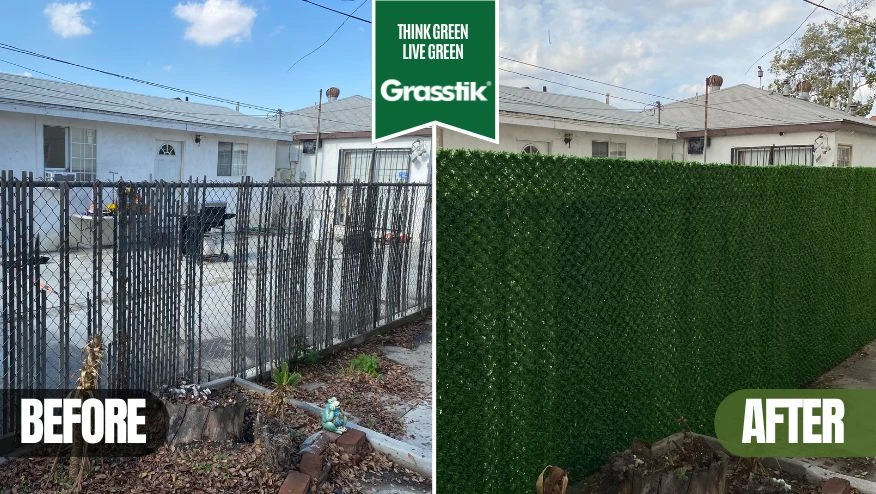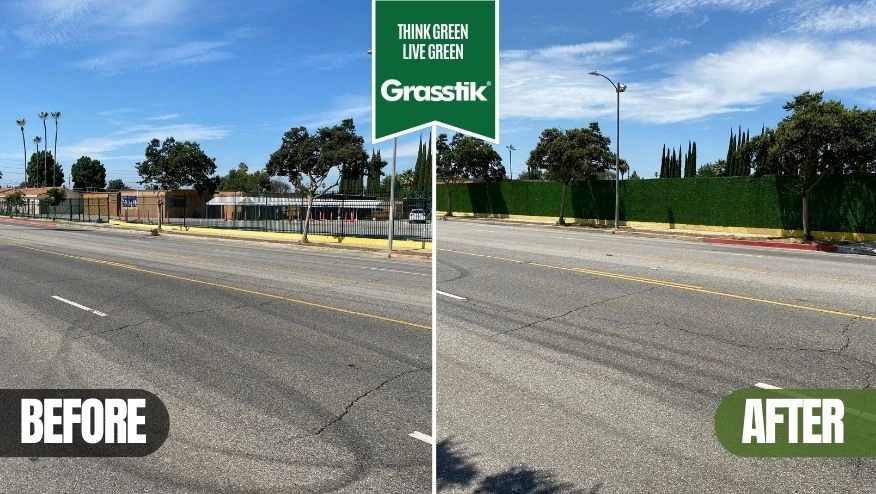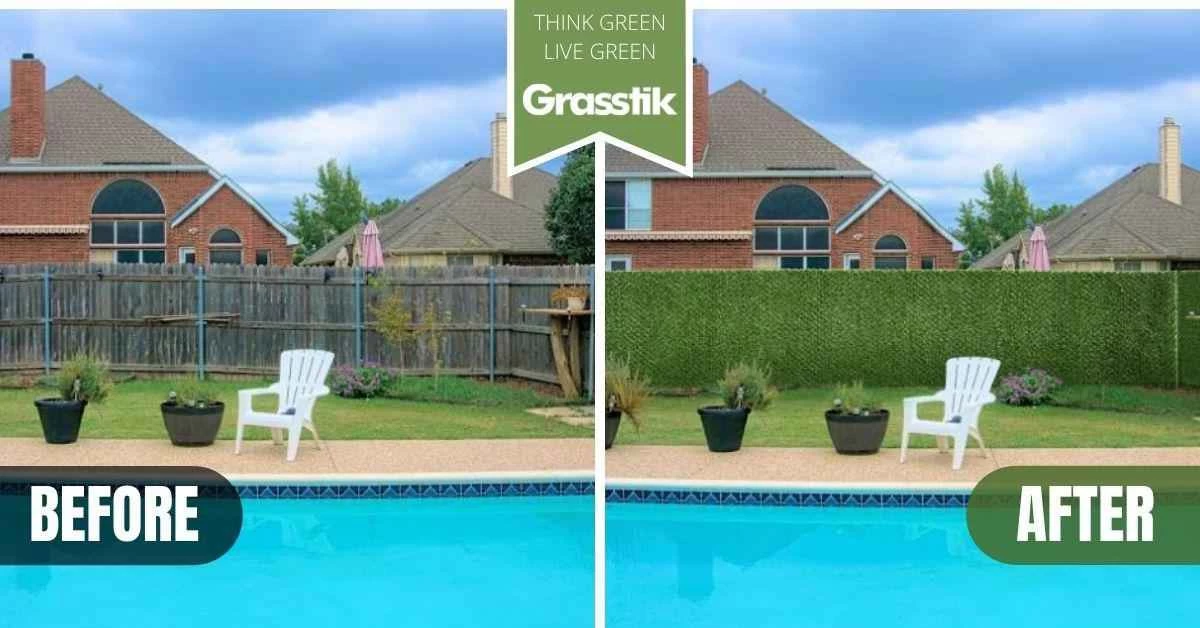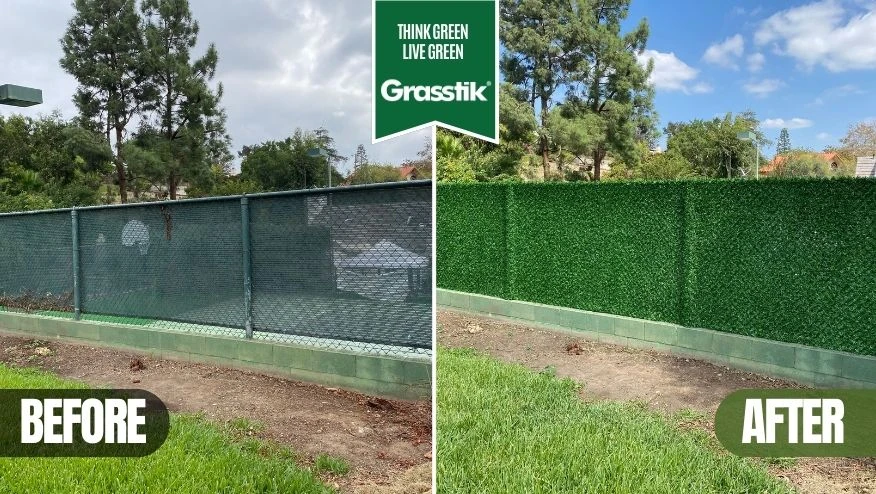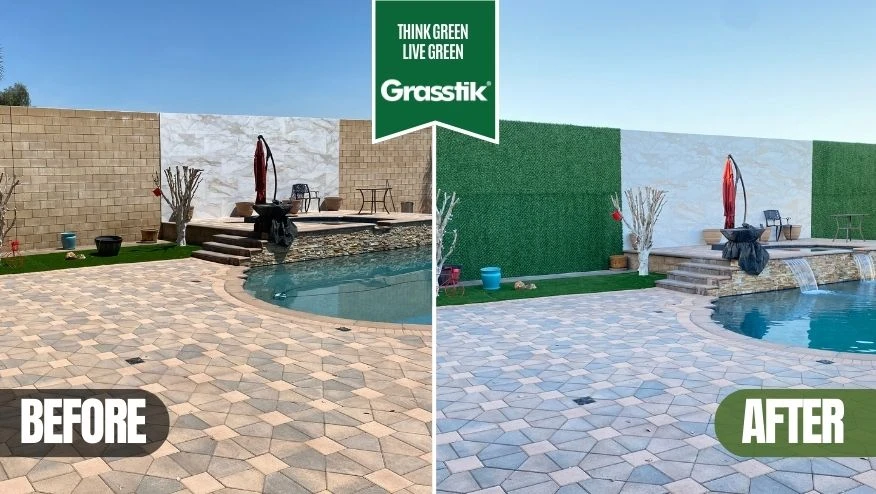
An architectural fence is not just a boundary marker but a crucial component of landscape and building design, integrating style with functionality. Unlike standard fencing, architectural privacy fencing is designed to blend seamlessly with the surrounding architecture, elevating the aesthetic of a property while providing necessary seclusion. These fences are customized to meet specific aesthetic and functional needs, using materials and designs that complement the architectural style of the home or building. From sleek metal panels to classic wooden slats or contemporary composite materials, architectural privacy fences enhance the visual appeal of a property, ensure privacy, and contribute to a well-defined, secure perimeter.
Types of Architectural Privacy Fences
Architectural fences serve as both decorative and functional elements in landscape design. They come in various materials and styles, each suited for different aesthetic tastes and practical requirements. From the traditional warmth of wood to the modern appeal of composites, these fences can be tailored to enhance the seclusion and beauty of any property. Whether it's for a private residence or a commercial space, architectural privacy fences offer a blend of security, privacy, and design flexibility, allowing for a seamless integration with the existing architectural style.
Wood Privacy Fences: Classic and Versatile
Wooden privacy fences are a timeless choice that offers natural beauty and versatility. They can be customized through staining or painting to match any design aesthetic, making them suitable for a wide range of architectural styles. Wood fences are popular for their classic look and the warm, inviting ambiance they add to outdoor spaces. They provide effective privacy and can be designed with various levels of opacity, from tight-knit panels to more open, decorative configurations.
Metal Privacy Fences: Durability meets Design
Metal privacy fences, particularly those made from grass fence panels, combine high durability with elegant design. These panels are often crafted from materials like aluminum or wrought iron and can feature intricate designs that elevate the fence from a mere boundary to a statement piece. Metal fences are especially valued for their longevity and minimal maintenance, making them a perfect choice for both contemporary and traditional properties that require a durable security solution.
Composite Privacy Fences: The Best of Both Worlds
Composite privacy fences offer the aesthetics of wood without maintenance. Made from a blend of wood fibers and plastic polymers, composite fences are resistant to weather, pests, and decay. They provide a durable, low-maintenance alternative to traditional wood, maintaining their color and integrity for years without needing paint or stain. This makes them ideal for homeowners looking for a practical yet beautiful fencing solution.
Plant Privacy Fence: Natural Privacy Solutions
An architectural chain link fence can be transformed into a vibrant, living wall when intertwined with climbing plants or outfitted with hanging planters. This type of fence provides a unique natural privacy solution, blending the robust security of metal with the organic beauty of greenery. It's an eco-friendly option that helps integrate a property into its natural surroundings while enhancing privacy and reducing noise.
Artificial Grass Privacy Fences: Innovative Green Solution
Grass fence roll made of artificial grass offers an innovative, green solution for those seeking privacy without the upkeep of live plants. These rolls attach easily to existing fence structures, providing a lush, year-round green look. Artificial grass fences are particularly suitable for urban environments where space and maintenance capabilities are limited. They provide an aesthetically pleasing and practical barrier that requires little to no upkeep.
Design Principles for Architectural Privacy Fences
When designing architectural fencing, it's crucial to consider several key principles to ensure that the fence not only provides privacy and security but also complements and enhances the property's aesthetic. The design should align with the overall architectural theme, maintaining a balance between form and function. This involves careful consideration of materials, height, placement, and integration with the landscape, ensuring the fence serves as a cohesive element that enhances both the beauty and functionality of the space.
Harmony with House Architecture
Architectural privacy fences should harmonize with the existing architecture of the house. This alignment ensures that the fence does not stand out awkwardly but rather complements the building's style. Whether the home features modern, minimalist lines or more traditional, ornate features, the fence should echo these themes, using similar or complementary materials and designs. This synergy enhances the property's curb appeal and maintains design integrity.
Scale and Proportion
The scale and proportion of a privacy fence are critical to its success within the site's overall landscape. The height and length of the fence should be proportionate to the size of the property and the building it surrounds. A fence that is too high can make a residence look fortified and unwelcoming, while one too low might not provide adequate privacy or security. Proper scaling ensures that the fence is effective without overwhelming the property's aesthetic.
Color and Texture Considerations
Color and texture play a significant role in the design of architectural safety fencing system solutions. The right choice of color can make a fence a standout feature or a subtle background element, depending on the desired effect. Textures add depth and interest, helping the fence to either blend in with the natural environment or contrast sharply for a bold statement. These elements should be chosen to complement the house and landscape, enhancing the overall safety and aesthetic appeal of the fencing system.
Innovations in Privacy Fence Materials and Design
Innovations in architectural fence design are transforming how privacy fences are perceived and utilized in residential and commercial properties. Modern technology and creative thinking have led to the development of new materials and designs that offer enhanced durability, sustainability, and aesthetic appeal. These advancements enable architects and designers to create privacy fences that are not only functional but also integral elements of a property’s design, capable of adapting to a variety of architectural styles and environmental conditions.
Eco-friendly Materials
The shift towards sustainable building materials has significantly influenced the development of eco-friendly privacy fences. Manufacturers are now producing fences made from recycled plastics, sustainable woods, and composite materials that offer durability without the environmental impact of traditional materials. These eco-friendly options not only help reduce the carbon footprint but also provide long-lasting performance with minimal maintenance, making them an ideal choice for environmentally conscious property owners.
Custom Designs and Patterns
Architectural fence designs are increasingly focusing on customization to meet specific aesthetic and functional requirements. With advanced manufacturing techniques like laser cutting and 3D printing, designers can create unique patterns and intricate designs that reflect personal or brand aesthetics. This level of customization allows for the creation of fences that are true to the client’s vision, providing not just privacy and security but also a form of artistic expression that enhances the property’s overall appearance.
The Role of Architectural Privacy Fences in Landscape Design
An architectural privacy fence plays a pivotal role in landscape design by serving as more than just a boundary or barrier. These fences help to create a cohesive visual flow throughout outdoor spaces, blending functionality with aesthetics. By carefully selecting materials, styles, and placements, architectural privacy fences can enhance the natural beauty of the garden, provide a backdrop for featured plants and elements, and improve the overall usability of outdoor areas. They serve as crucial elements in structuring the landscape, ensuring privacy while contributing significantly to the design narrative.
Defining Spaces within the Garden
Architectural fence panels are essential tools in the strategic delineation of spaces within a garden. They can be used to create intimate spaces for seating and relaxation, conceal utility areas, or segment a garden into thematic zones. This segmentation helps in organizing the landscape into manageable and functional areas, enhancing both the utility and beauty of the garden. Well-designed fence panels can be both discrete and decorative, complementing the surrounding flora and adding an element of structure to the natural chaos of the garden.
Enhancing the Aesthetic Appeal of Outdoor Spaces
The impact of architectural fencing design on the aesthetic appeal of outdoor spaces cannot be overstated. These designs can transform a simple boundary into a striking feature of the landscape. With options ranging from minimalist to ornate, privacy fences can be tailored to reflect the architectural style of the house and the character of the garden. Effective fencing design not only secures a property but also enhances the visual appeal, adding to the overall ambiance and value of the outdoor space.
Maintenance and Care for Architectural Privacy Fences
Maintaining architectural privacy fences is crucial for preserving their appearance and functionality over time. Regular care ensures that these important design elements continue to enhance privacy and security while maintaining their aesthetic value. Proper maintenance strategies can vary depending on the materials used and the environmental conditions faced by the fence. From simple cleaning routines to more specific protective measures, a well-maintained fence can significantly extend its lifespan, prevent costly repairs, and keep it looking as intended by the original design.
Routine Maintenance Tips
For architectural fencing panels, routine maintenance is essential to preserve their integrity and appearance. Regular cleaning to remove dirt and debris, along with inspections for signs of wear or damage, should be part of a maintenance routine. For wood panels, this may include periodic staining or sealing to protect against weathering and rot. Metal panels might require checks for rust and the application of rust-inhibitors or paint touch-ups. Additionally, ensuring that all connecting hardware is tight and not corroded can prevent structural failures and prolong the life of the fence.
Longevity and Durability of Different Materials
The longevity and durability of materials used in architectural privacy fences vary widely. Wood, while popular for its aesthetic appeal, requires regular treatment to resist rot, pests, and weathering. Metal fences, such as aluminum or wrought iron, offer greater durability, and typically require less maintenance, though they may need rust protection. Vinyl and composite materials provide excellent weather resistance and durability with very little maintenance needed, often only requiring cleaning to maintain their appearance. Choosing the right material based on climate and usage can greatly affect the lifespan and upkeep requirements of the fence.

